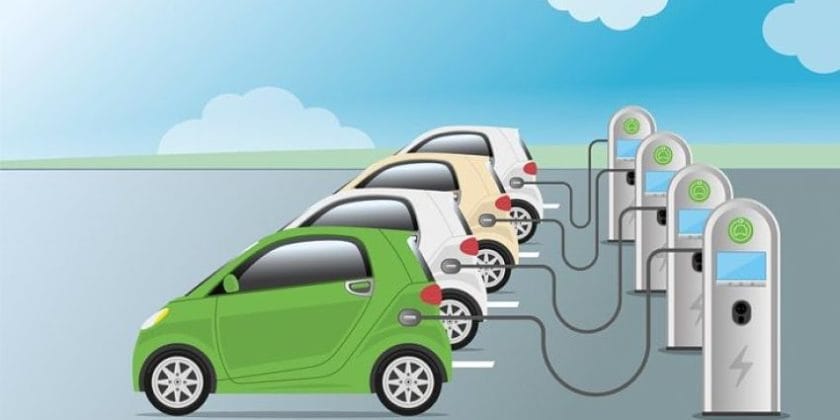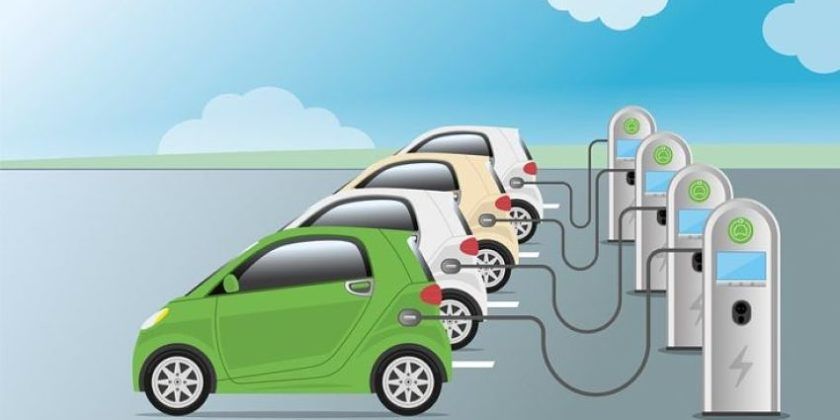You can save money by owning an Electric car.
One of the biggest day-to-day savings is the cost of fuel.On top of the cost savings, electricity rates are much more stable than gasoline prices.


Owning an Electric car might be a bit expensive compared to the Internal Combustion Engines cars (ICE). However,one of the biggest day-to-day savings is the cost of fuel.On top of the cost savings, electricity rates are much more stable than gasoline prices. In Kenya, for example the prices of diesel and petrol keep fluctuating with current price being USD 0.897 per litre and 3.396 per gallon. Electricity has been consistent rate meaning fueling an electric car is both more budget-friendly and more predictable.
As battery technology continues to improve, the equivalent cost per mile for driving electric vehicles is significantly less expensive than driving gasoline-based vehicles. Your average electric car can go approximately 100 miles per 30 kilowatt-hours (kWh) of electricity. Assuming that you can buy 1 kWh of electricity for $0.12, this means that you can travel about 36 miles for $1.00. In terms of gasoline-powered vehicles, your average car with a fuel efficiency of 22 miles per gallon will only be able to travel about 18 miles for that same $1.00 in costs. Essentially, by driving an electric car you can get double the mileage for your dollar.
There are several advantages of owning an EV such as:
i) Fewer maintenance parts and lower maintenance costs
All-electric cars don’t have much of the equipment specific to internal combustion engines like spark plugs, transmissions, radiators, oil and fuel filters, exhausts, and other gasoline-specific components. As a result, the cost of maintaining an electric vehicle is lower than gasoline-powered vehicles. Most electric cars also have regenerative braking, which uses the electric motor to do much of the braking. This also helps save the brake pads and rotors in electric vehicles, further reducing maintenance costs.
Even if you choose a plug-in hybrid electric vehicle with an internal combustion engine, your maintenance costs will be lower. PHEV engines run less often than a gasoline-powered engine, so there is less wear and tear on the engine and less need for oil and coolant.
ii) You can generate your own electricity to maximize your electric car savings
Using rooftop solar panels can help reduce the costs of charging an electric vehicle even further while simultaneously reducing fossil fuel consumption. In fact, investing in solar panels for electric car charging can pay off more quickly than using your solar panels for home electricity alone, because the solar power replaces more expensive gasoline in addition to grid electricity.
Solar panel systems for electric car charging also have a strong return on investment. These systems are capable of generating returns of 10 to 30 percent annually, and the average EnergySage Solar Marketplace user breaks even on the cost of panel installation in seven and a half years. Once the initial installation cost is paid off, you will have free electricity for the remainder of the solar panel system's lifespan.
Even more, the average lifespan for solar panel systems is 25 to 30 years. That means that, in addition to offering a high return on investment, installing a solar panel system represents 25+ years of free electric generation. The solar panel system will likely outlast the lifetime of a vehicle and can continue fueling additional electric vehicles for years to come.
Finally, installing solar has the additional benefit of increasing your property value. Studies have shown that homes with solar panel systems are valued and sold at values higher than similar homes in the area in addition to selling faster. This increase in property value is about 3-4% and the largest value increases are in areas with high electricity rates and strong solar incentive programs.
Overall, combining the purchase of an electric car with the installation of a solar panel system allows for even more savings throughout the lifetime of both the vehicle and the solar panel system. In addition to reducing reliance on fossil fuels for charging, a solar panel system can offset electricity costs and generate free energy for 25+ years. As a way to reduce environmental impact, save money, and increase value, the combination of solar panel systems and electric cars has numerous benefits that can be maintained for years to come.
iii) Be ready for the battery charger
One more cost to take into consideration when purchasing an electric vehicle is how to charge it. While you may have a few charging stations around town, a home charging unit will ensure your car is always powered up. One of these units will cost about $500–$700. Installation of these units is pretty simple, but be sure to think about the length of the cable and where you park your car before getting started.

iv) Incentives for EV purchase/imports
Several countries have incentives once you purchase an EV . Some of these countries include:-
Norway- It has one of the most impressive EV targets, planning to completely ban the sale of petrol cars by 2025, and 37% of new vehicle sales are currently EVs. In Norway, electric cars are exempt from acquisition tax, representing around NOK 100 000 (USD 11 600), furthermore, they are exempt from the 25% value-added tax (VAT) on car purchases. This, coupled with a large number of waivers on fees such as road tolls and ferries, continues to provide a favorable environment for electric car uptake.
Iceland- Electric vehicles are exempt from all import duties on car purchases, which are customs 0-65%, depending on CO2 emission level, and 24% value-added tax (VAT). With these generous incentives, BEVs and PHEVs accounted for 11.7% of total new car registrations in 2017. Iceland sometimes gets overlooked, probably because of its small size, but the country is actually at second place behind Norway.
China- policies continue to provide strong financial and non-financial incentives to EV adoption. Exemptions from purchases and additional taxes ranged between CNY 35 000 and CNY 60 000 (USD 5 000 to USD 8 500). Local and regional authorities can complement these within the limit of 50% of the central subsidies. The combination of policies is encouraging consumers to buy electric cars at a financially comparable price tag.
Japan- Anew subsidy scheme was introduced in 2016 that grants gradually higher subsidies as the battery range increases, with the maximum subsidy set at JPY 850 000 (USD 7 700). For example, a Nissan Leaf with a 30-kWh battery, the purchase incentive amounts to JPY 330 000 (USD 3 000).
United States of America- Federal government and a number of states offer financial incentives, including tax credits, for lowering the upfront costs of plug-in electric vehicles. Federal Internal Revenue Service (IRS) tax credit is for $2,500 to $7,500 per new EV purchased for use in the U.S. The size of the tax credit depends on the size of the vehicle and its battery capacity, for example, Tesla Model S would be applicable to the full $7,500 subsidy. At a state level, offering an additional tax credit of $5,000, and with the federal subsidy, you can get a maximum of $12,500 off the sticker price of an EV.
The United Kingdom - offers up to 35% of the purchase price of an EV, or up to a maximum of £4,500. In addition, a grant of £500 is available to contribute towards the cost of home charging installation.
Canada- the Government of Ontario offers a subsidy of up to $14,000 off the purchase price of an EV and up to $1,000 of the price of a home charging station and a green license plate. The Government of Quebec offers a rebate of up to $8,000 and 50% of the cost of a home charging station, or up to a maximum of $600. The government of British Columbia offers a rebate of up to $5,000 of the price of an EV.
Kenya-Kenya could start commercial use of electric vehicles in Matatu business after taxes were halved in the Budget.The Government proposed changes to the tariff structure reducing duty for electric vehicles carrying more than 10 persons from 20 percent to 10 per cent.
According to the Finance Bill 2019, fully electric-propelled coaches, buses and mini-buses with a seating capacity exceeding 29 persons (8702.40.19) as well as coaches, buses and mini-buses with less than 21 persons (8702.40.22) will enjoy a 10 percent duty rate. Investors have also been allowed to import electric golf and sightseeing bus with motor 72 V/6.2 KW and designed to carry more than 10 persons (8702.40.91) as well as other vehicles of any capacity propelled by electric motor.




